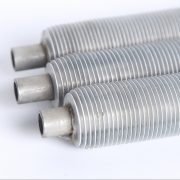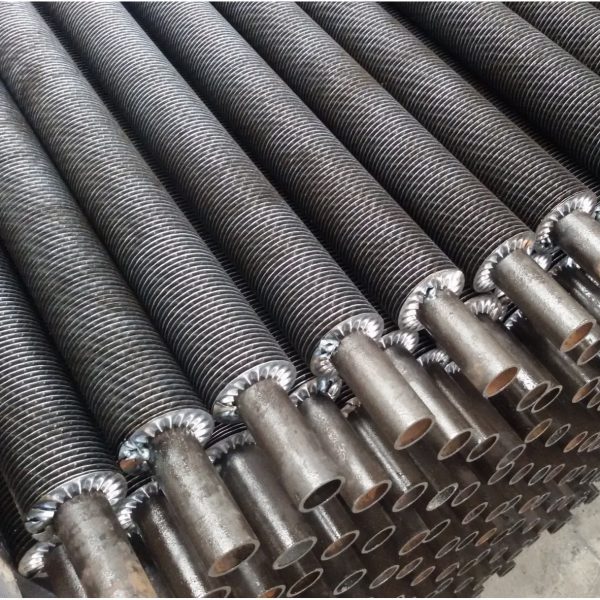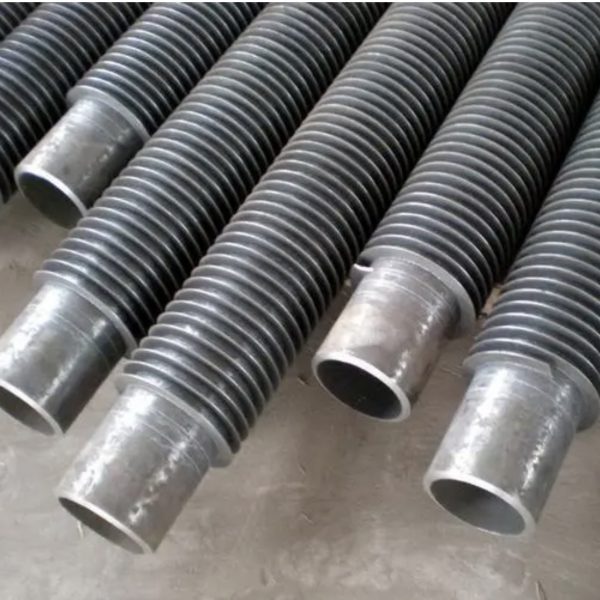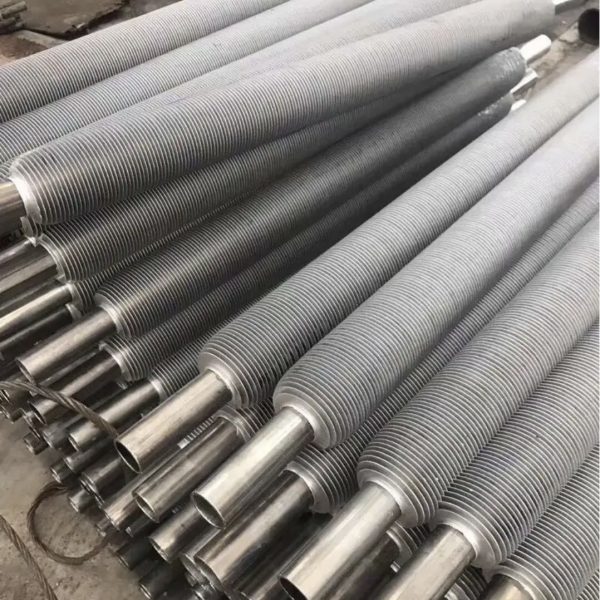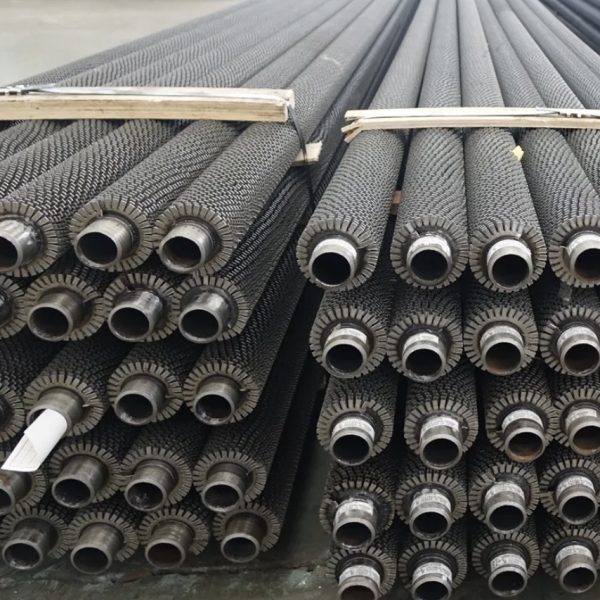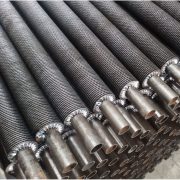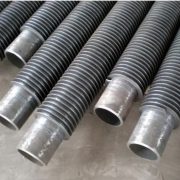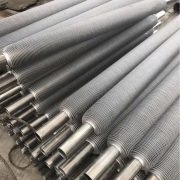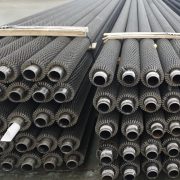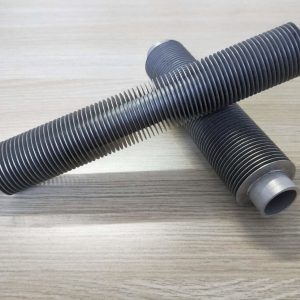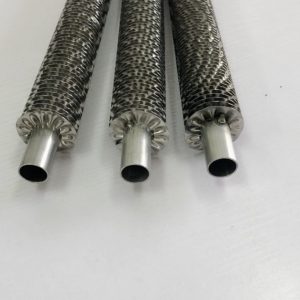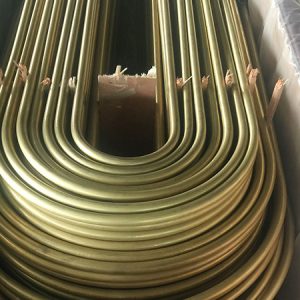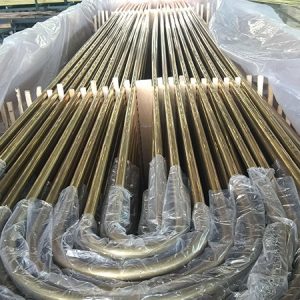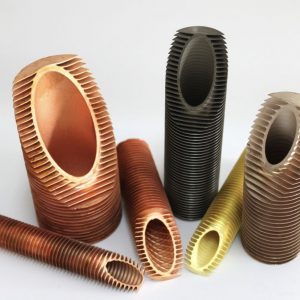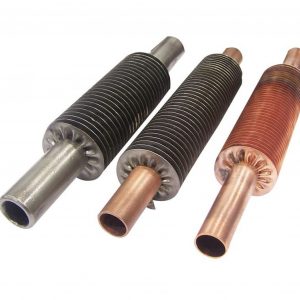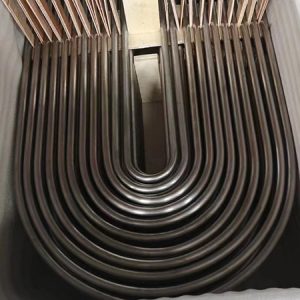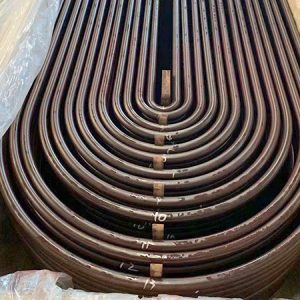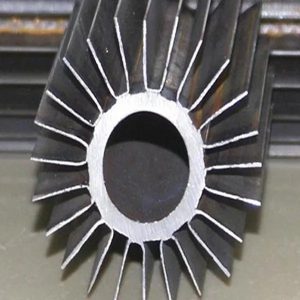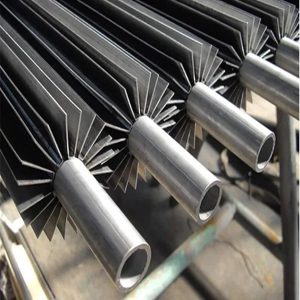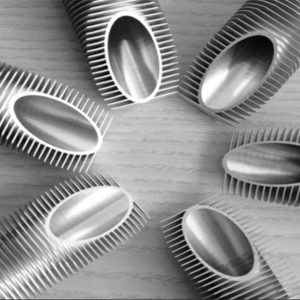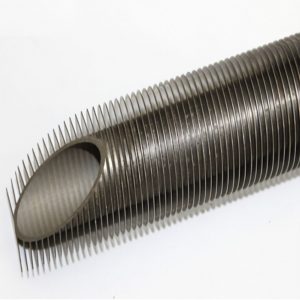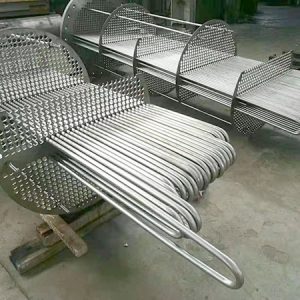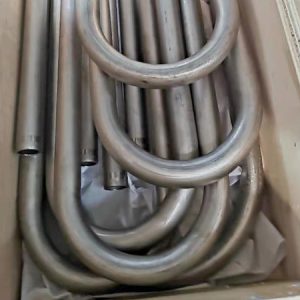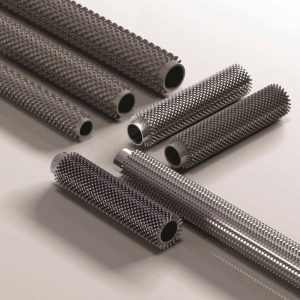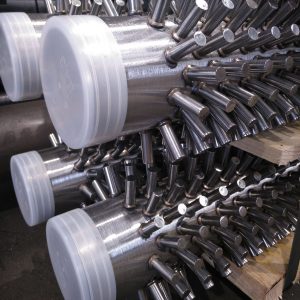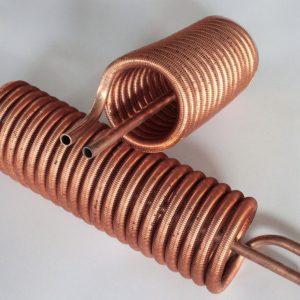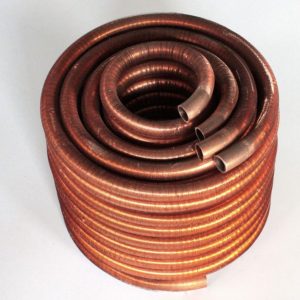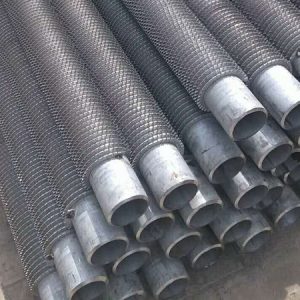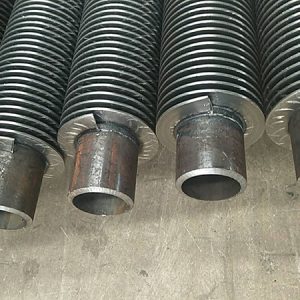Dikişsiz Fin Tüp
Bir kanat tüpü, dış yüzeyin etrafında küçük yüzgeçlere sahip bir tüptür..
Bu kanatçıklar, ısıyı tüpün içindeki malzemeden dış alana veya tam tersi yönde aktarmak için bir filtre ve mekanizma görevi görür.. Fin tüpleri, sıcak bir sıvıdan tüpün duvarından daha soğuk bir sıvıya ısı transferi gerektiren uygulamalarda kullanılır..
Grand çok çeşitli kanat tüpleri sağlar(karbon, Paslanmaz,bakır,alüminyum,titanyum,ve saire;) ısı eşanjörlerinde kullanılır (hava, su ve kimyasal olarak soğutulmuş)petrol gibi çeşitli endüstriler için, Petrokimya, çelik, güç üretimi ve çok daha fazlası.
- Tarif
- Detailed information
- Why use finned tubes?
- Soruşturma

Fin borusu referansı
Karbon çelik kanatçıklar karbon üzerinde mevcuttur, paslanmaz çelik, veya bakır boru. Listelenmemişse lütfen belirli bir boyut için arayın

| Tür | Tarif | Taban tüpü Ö.D. (Mm) |
Fin özellikleri (Mm) | ||
|---|---|---|---|---|---|
| Yüzgeç aralığı | Fin yüksekliği | Yüzgeç kalın | |||
| Katıştırılmış | G-tipi kanat tueb | 16-63 | 2.1-5 | <17 | ~0,4 |
| Ekstrüde | Tek metal kombine metal | 8-51 | 1.6-10 | <17 | 0.2-0.4 |
| Düşük kanatlı tüp t-tipi kanatçık tüp | 10-38 | 0.6-2 | <1.6 | ~0,3 | |
| Bambu tüp oluklu boru | 16-51 | 8-30 | <2.5 | / | |
| Yara | l/kl/ll tipi kanatçık tüpü | 16-63 | 2.1-5 | <17 | ~0,4 |
| Dizgi | Dize yüzgeci tüpü | 25-38 | 2.1-3.5 | <20 | 0.2-0.5 |
| U-tipi | U-tipi tüp | 16-38 | / | / | / |
| Kaynak | HF kaynak kanatçık borusu | 16-219 | 3-25 | 5-30 | 0.8-3 |
| H / HH tipi kanatçık tüpü | 25-63 | 8-30 | <200 | 1.5-3.5 | |
| Saplanmış yüzgeç tüpü | 25-219 | 8-30 | 5-35 | φ5-20 | |
Kullanıcı ihtiyaçlarına göre, çelik şerit sargı kanatlı boru ve çelik alüminyum kompozit kanatlı boru her türlü üretebiliriz.
Malzeme
Karbon çelik kanatçıklar karbon üzerinde mevcuttur, paslanmaz çelik, veya bakır boru. Listelenmemişse lütfen belirli bir boyut için arayın

Size geniş bir malzeme portföyü sunuyoruz ve termal iletkenlikle ilgili özel ihtiyaçlarınızı karşılamak için teklifimizi istediğiniz zaman genişletebiliriz., mekanik özellikler, veya korozyon direnci.
- Taban tüpü: Karbon çeliği, Paslanmaz çelik, Bakır, Cupro Nikel, Alüminyum, Alaşımlı Çelik
- Yüzgeç: Karbon çeliği, Paslanmaz çelik, Bakır, Alüminyum
- Yüzük: Karbon çeliği, Alüminyum, Sıcak daldırma galvanizleme
Why use finned tubes?
Finned tubes are used in applications involving the transfer of heat from a hot fluid to a colder fluid through a tube wall. The rate at which such heat transfer can occur depends on three factors: (1) the temperature difference between the two fluids; (2) the heat transfer coefficient between each of the fluids and the tube wall; ve (3) the surface area to which each fluid is exposed. In the case of a bare (unfinned) tubes, where the outside surface area is not significantly greater than the inside surface area, the fluid with the lowest heat transfer coefficient will dictate the overall heat transfer rate. When the heat transfer coefficient of the fluid inside the tube is several times larger than that of fluid outside the tube (for example steam inside and oil outside), the overall heat transfer rate can be greatly improved by increasing the outside surface of the tube. In mathematical terms, the product of heat transfer coefficient for the outside fluid multiplied by the outside surface area is made to more closely match the product of the inside fluid heat transfer coefficient multiplied by the inside surface area.
So the whole concept of finned tubes is to increase the outside surface area of the tube. As an example, a finned tube configuration of 2” (nominal, 2.375” actual) pipe with a ¾” high welded helical solid fin of 12 gauge thickness with 6 fins per inch has an outside surface area of 8.23 sq. ft. per linear foot; whereas the same bare pipe has an outside surface area of only .62 sq. ft. per linear foot. That is a 13X increase in outside surface area. See Design Information for extensive tables of surface areas and fin weights.
“The whole concept of finned tubes is to increase the outside surface area of the tube.”
“In many cases, one finned tube replaces six or more bare tubes at less than 1/3 the cost and 1/4 the volume.”
By increasing the outside surface area of the tube, the overall heat transfer rate is increased, thereby reducing the total number of tubes required for a given application. This reduces the overall equipment size and the cost of the project. In many cases, one finned tube replaces six or more bare tubes at less than 1/3 the cost and ¼ the volume.

